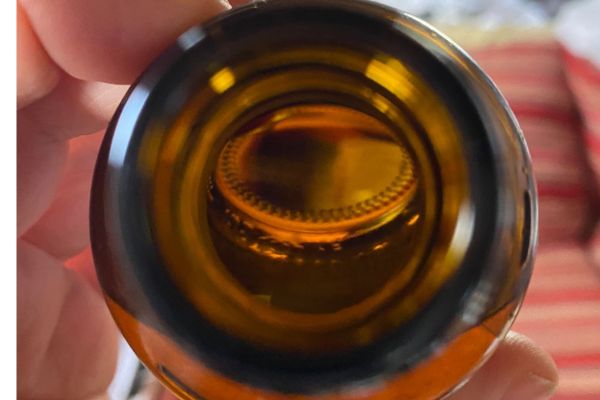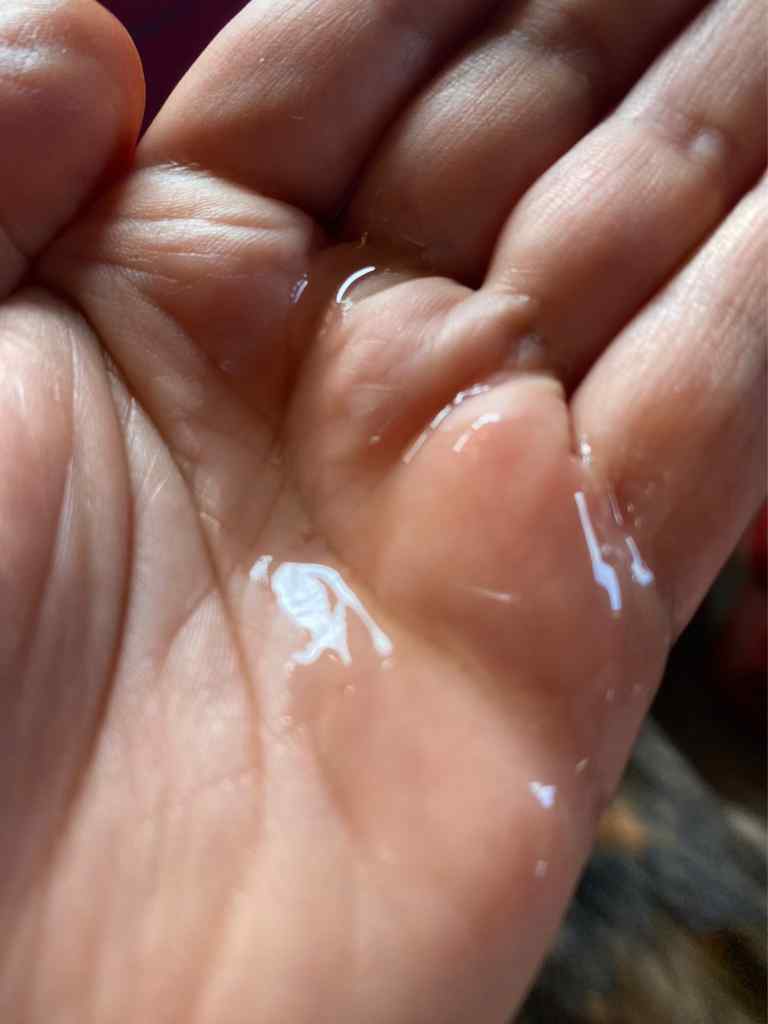Squalane for Fungal Acne
Squalane is safe for fungal acne as it is a lightweight, non-comedogenic oil that doesn’t feed the fungi causing the acne.
It can help moisturize and balance the skin without exacerbating the condition.
However, it is not a standalone product or treatment for fungal acne and should be used alongside antifungal medications for optimal results.

As you can see in the image above it can be purchased as a standalone product. Many oils contain squalane, argan oil and fungal acne don’t go together even though argan oil does have squalane. So make sure to understand we’re talking about the standalone product (squalane oil, in a bottle), and not squalane oil as part of another oil’s composition (or another product’s composition).
Squalane for fungal acne does not directly the condition but offers supportive benefits. It helps maintain the skin’s moisture barrier, reducing irritation and inflammation without feeding the fungi responsible for the acne. This creates a healthier environment for the skin to heal, while antifungal medications target and eliminate the underlying fungal infection.
Being non-comedogenic, squalene should not cause breakouts or block the pores.
Fungal acne, also known as pityrosporum folliculitis, is caused by an overgrowth of yeast on the skin, and typically appears as small, itchy bumps on the forehead, chest, and back. Treatment for fungal acne typically involves the use of antifungal medications
Where Does Squalane Oil Come From and Why is it Safe for Fungal Acne?
Squalane is a type of oil that is derived from squalene, which is a naturally occurring compound that is found in the sebum (oil) produced by our skin. Squalene is also found in certain plant sources, such as olives and sugarcane.

To create squalane, squalene is hydrogenated, which means that hydrogen is added to the compound to make it more stable and less susceptible to oxidation.
This results in a stable, non-comedogenic oil that is widely used in skincare products due to its moisturizing and hydrating properties.
While there is limited scientific research on the effectiveness of squalane specifically for treating fungal acne, some people with fungal acne have reported that using squalane as a moisturizer has helped to improve the appearance and texture of their skin.
It’s possible that the moisturizing and barrier-enhancing properties of squalane may help to soothe and hydrate the skin, which can be beneficial for people with fungal acne. However, it’s important to note that squalane is not a substitute for antifungal medication when it comes to treating fungal acne.
How Effective is Squalane Oil in a Scale of 1 to 10 for Fungal Acne?
It’s difficult to give an exact number on a scale from 1 to 10 for how effective squalane is for fungal acne, as there is limited scientific research on this specific use of the ingredient.

However, squalane is generally considered to be a safe and non-irritating ingredient for most people, and can be helpful for hydrating and moisturizing the skin. It may be beneficial for people with fungal acne to use squalane as a moisturizer, as long as it is not used as a substitute for antifungal medication.
Overall, I would say that squalane may be a helpful addition to a skincare routine for people with fungal acne who are looking for a lightweight, non-comedogenic moisturizer to help hydrate and soothe the skin.
However, it’s important to use evidence-based treatments for fungal acne, which typically involve the use of antifungal medications, and to consult with a dermatologist if you have any concerns about your skin.
How to Use Squalane Oil as Part of a Skincare Routine if You Have Fungal Acne
Morning:
- Cleanse with a gentle, non-comedogenic cleanser that is free of oils and other ingredients that can promote the growth of yeast on the skin. Another option is using a face wash for fungal acne.
- Apply 2-3 drops of squalane oil to the face and neck, using gentle, circular motions to massage it into the skin.
- Apply a broad-spectrum sunscreen with an SPF of 30 or higher to protect the skin from UV damage.
Evening:
- Cleanse with the same gentle, non-comedogenic cleanser or face wash used in the morning.
- Apply an antifungal medication as prescribed by your dermatologist to help clear the fungal infection.
- Apply 2-3 drops of squalane oil to the face and neck, using gentle, circular motions to massage it into the skin.
Optional:
- Use a gentle exfoliating product once or twice a week to help remove dead skin cells and promote skin renewal.
- Apply a spot treatment containing salicylic acid to any active acne lesions, as directed by your dermatologist.
If Unsure About Using Squalane Oil or If you Have Fungal Acne
- Consult with a dermatologist: It’s important to consult with a dermatologist if you suspect that you have fungal acne, as they can provide an accurate diagnosis and recommend appropriate treatments. They can also provide personalized recommendations for skincare products, including squalane oil, that may be helpful for your skin.
- Use evidence-based treatments: The most important components of your skincare routine for fungal acne are likely to be a gentle, non-irritating cleanser and antifungal medication to help clear the infection. Moisturizing the skin with a non-comedogenic product can also be helpful, but it’s important to use evidence-based treatments for fungal acne, as using the wrong products can exacerbate the condition.
- Patch test: Before using any new skincare product, including squalane oil, it’s important to do a patch test to check for any allergic reactions or irritation. Apply a small amount of the product to a small area of skin, such as the inside of your wrist, and wait 24 hours to see if any redness, itching, or other signs of irritation occur.
- Start slowly: If you decide to incorporate squalane oil into your skincare routine, start with a small amount and gradually increase the amount over time. This can help to minimize the risk of irritation and allow your skin to adjust to the new product.
- Be patient: It may take time for your skin to respond to any new skincare product, including squalane oil. If you don’t see immediate results, be patient and continue to use the product as directed. If you have any concerns or questions, consult with your dermatologist for guidance.
What Other Products Can Help Soothe and Hydrate the Skin for Fungal Acne?
You might not feel sure about squalane oil because, it is still an oil and you might not feel confident or comfortable with it.
Below is a list of ingredients that might help which are not oil based but will help hydrate and soothe your skin:
- Hyaluronic acid: This is a humectant that helps to hydrate the skin by attracting and retaining moisture.
- Niacinamide: This is a form of vitamin B3 that has been shown to help improve the skin’s barrier function and reduce inflammation.
- Aloe vera: This natural ingredient has anti-inflammatory properties and can help to soothe and hydrate the skin.
If you suspect that you have fungal acne, it’s important to consult with a dermatologist for an accurate diagnosis and appropriate treatment plan. This may include the use of topical or oral antifungal medications, as well as other skincare products to help soothe and moisturize the skin.
References
- Özel Şahin G, Toka Özer T, Durmaz S. Investigation of fungus at stratum corneum of patients with acne vulgaris. Microbial Pathogenesis [Internet]. 2023 [cited 2023 Aug 15]; 175:105982. Available from: https://www.sciencedirect.com/science/article/pii/S0882401023000153.
- Rubenstein RM, Malerich SA. Malassezia (Pityrosporum) Folliculitis. J Clin Aesthet Dermatol [Internet]. 2014 [cited 2023 Aug 15]; 7(3):37–41. Available from: https://www.ncbi.nlm.nih.gov/pmc/articles/PMC3970831/.
- Lozano-Grande MA, Gorinstein S, Espitia-Rangel E, Dávila-Ortiz G, Martínez-Ayala AL. Plant Sources, Extraction Methods, and Uses of Squalene. International Journal of Agronomy [Internet]. 2018 [cited 2023 Aug 15]; 2018:e1829160. Available from: https://www.hindawi.com/journals/ija/2018/1829160/.
- Ayers K, Sweeney SM, Wiss K. Pityrosporum Folliculitis: Diagnosis and Management in 6 Female Adolescents With Acne Vulgaris. Archives of Pediatrics & Adolescent Medicine [Internet]. 2005 [cited 2023 Aug 15]; 159(1):64–7. Available from: https://doi.org/10.1001/archpedi.159.1.64.
- Paichitrojjana A, Chalermchai T. The Prevalence, Associated Factors, and Clinical Characterization of Malassezia folliculitis in Patients Clinically Diagnosed with Acne Vulgaris. CCID [Internet]. 2022 [cited 2023 Aug 15]; 15:2647–54. Available from: https://www.dovepress.com/the-prevalence-associated-factors-and-clinical-characterization-of-mal-peer-reviewed-fulltext-article-CCID.
- Malassezia Folliculitis – an overview | ScienceDirect Topics [Internet]. [cited 2023 Aug 15]. Available from: https://www.sciencedirect.com/topics/medicine-and-dentistry/malassezia-folliculitis.
